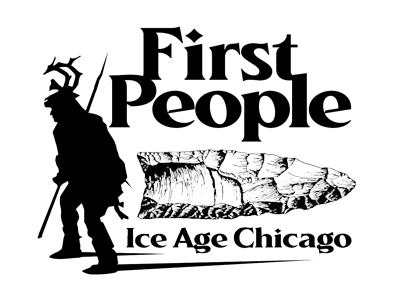Clovis Points- Ice Age Weaponry
In 1929, James Ridgely Whiteman, a 19-year old amateur archeologist, discovered a distinctive style of fluted spear point along Blackwater Draw eroding out along with bones of extinct mammoths. In 1932, as gravel mining began to destroy the site, the first professional excavations began and soon uncovered these unusual spear points in direct association with the huge bones of the extinct mammoth. With this discovery, the presence of humans in North America was pushed back to the end of the last ice age.
Clovis points, with their distinctive style of manufacture involving the removal of flakes on each face extending from the base to the tip, or “fluting” soon became a marker or “index fossil” of sorts for the presence of humans during the Ice-Age. Because of their deep antiquity, well crafted manufacture, and distinctive nature, Fluted Points have remained an object of fascination and study to this day.
In the following years, there was a continued focus on finding and excavating these types of sites (large elephant sized bones are much easier to find!)- and for better or worse “Clovis” groups have been characterized as elephant hunters ever since. Whether or not this is true and to what extent Clovis groups focused on hunting mammoths, mastodons, and other large game is still under debate, but what we do know is that these groups rapidly expanded across the entire continent and adapted to a wide variety of environments under challenging conditions!



Clovis Points? What are they and how were they used?
Clovis points are now generally accepted as the earliest archaeological evidence for humans in the western Hemisphere. While there may be earlier occupations within North America, referred to as “pre-clovis”, these sites are harder to recognize, find, and most remain disputed for one reason or another (arguements over dating, context, or whether artifacts are human or naturally produced). There are no known pre-clovis sites in Cook County or Illinois, and Clovis points remain the earliest identifiable artifacts within a sequence of well defined point styles that characterize the end of the Ice-Age (or late Pleistocene epoch) and the beginnings of the modern geologic period known as the Holocene (which we are currently in!). See the “Early Projectile Point styles of Cook County” section for more information.
The below images illustrate the “use lives” of Clovis points; that is how they were used is often reflected in the damage, wear, and resharpening patterns of these items as they were used, lost, or discarded over time. The two photos on the left are of a heavily impact damaged Clovis point found in Knox Co., Illinois. The damage sustained by this point clearly indicates it hit something hard (bone?) and with tremendous force! The image of the group of Clovis points on the right show the effects of resharpening during use, resulting in short, worn out examples suggesting use as cutting implements or knives, while the snapped or broken bases likely reflect both impact and cutting stresses which caused these examples to break. Thus, Clovis points are in reality multi-purpose implements serving as both projectile points for hunting and knives for cutting, scraping, and other everyday tasks similar to modern pocketknives. In short, how something broke tells us how it was being used! We like to think of these broken items as snapshots in time that tell a story of a “day in the life” of Ice Age Illinois!



